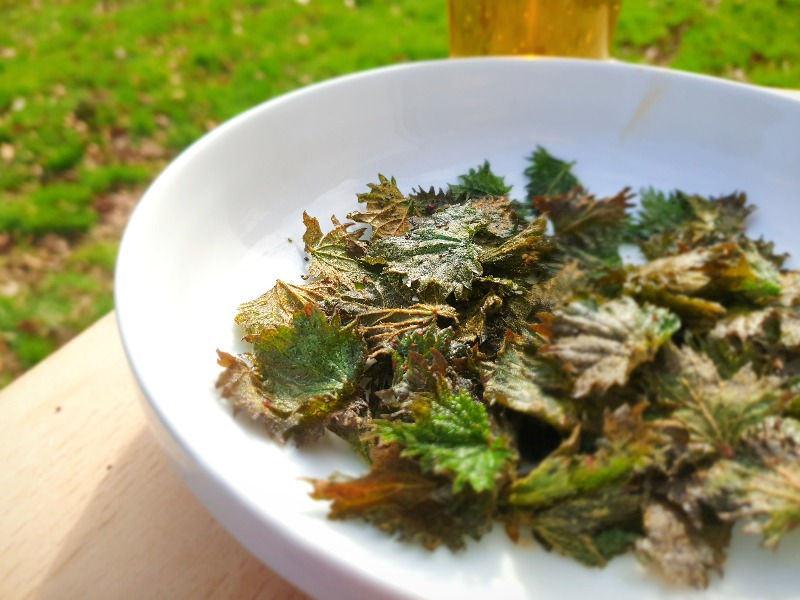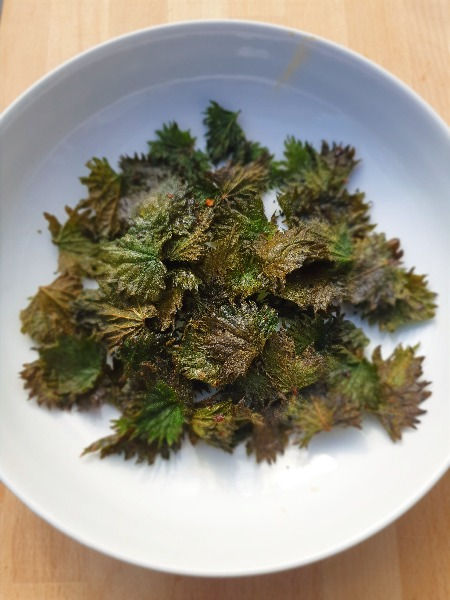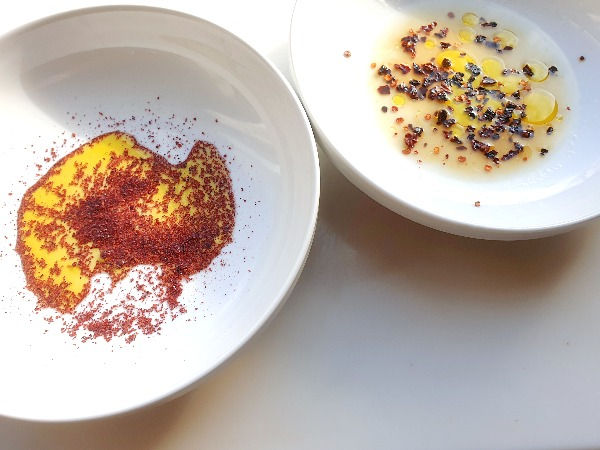Nettle crisps
- The Foraging Course Company
- Mar 16, 2022
- 2 min read
Updated: Mar 20, 2022
Nettles are a hero in disguise and it takes less than five minutes to turn them into this super-nutritious snack. This recipe is a great starting point for novice foragers to get to know this incredible, freely-available plant.

When it comes to the stinging or common nettle (Urtica dioica), there are so many culinary options to explore that it can be difficult to know where to start. They can be baked into cakes, made into beers, cordials, teas and soups or used like spinach and served wilted as a side dish or as a recipe ingredient (including in our favourite nettle pakora).

Nettle crisps can be one of the best ways to get to know this incredible plant, whose nutritional profile is unlike any other wild weed — it's packed with calcium, protein and iron, as well as a range of other vitamins and minerals. All you need is a few handfuls of washed and trimmed leaves, some olive oil, flavourings and a hot oven and this healthy snack is ready to eat within minutes. They're great to enjoy with a cold beer after a few hours out foraging.
The choice is yours when it comes to flavourings. We've suggested a couple of options, including the fantastic foraged spice sumac, which is a great accompaniment to all varieties of crisps and chips. Our other choice is the classic combination of lime and chilli flakes, which adds an extra zing to the fresh mineral flavours of nettle. Be wary of adding too much lime juice as it can stop the nettle from crisping. If you wanted to add an extra crunchy-coated twist, however, you could always stir some chick pea (gram) flour into the lime juice and olive oil mixture before baking. If heat isn't your thing, classic sea salt is also a great option.
Like all nettle leaf dishes, make these in the spring when the leaves are young and tender. Once the nettle has flowered, it will produce cystoliths — microscopic rods of calcium carbonate — which can cause urinary tract problems. Make sure you use gloves to protect your hands from the silica stings while preparing the leaves.

Ingredients (serves 2):
20g fresh nettle tips and leaves
2 tbsp olive oil
2 tsp sumac
Large pinch chipotle chilli flakes
1tsp lime juice
Method
 - Preheat your oven to 220 degrees c. Then, while wearing gloves, prepare the nettles. Remove the leaves and tips and discard the stalks. Rinse thoroughly in cold water and then leave in a colander to drain for 5mins. |
 - Prepare a bowl for each of your chosen flavourings. Add a table spoon of olive oil to each and then mix in your spices. Divide the nettles between each bowl and toss in the oil and spices to coat thoroughly. Alternatively, you can place the nettles directly on a baking tray and spray with oil, before sprinkling on your flavourings. |
 - Spread the nettles out on a baking tray in a single layer and bake for around 1min before turning the nettles and returning them to the oven for a further 1min. Note: you may need to be flexible with timings, as the moisture content of wild plants can vary, so some nettles can take a little longer to crisp than others. Using gram flour for a crisp coating may also extend oven time. |
Learn more about the common nettle or discover more about wild edibles and recipes on a foraging course
Always stay safe when foraging. You need to be 100% sure of your identification, 100% sure that your foraged item is edible, and 100% sure that you are not allergic to it (it is good practice to always try a small amount of any new food you are consuming). If in doubt, leave it out!







Comments